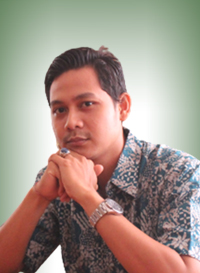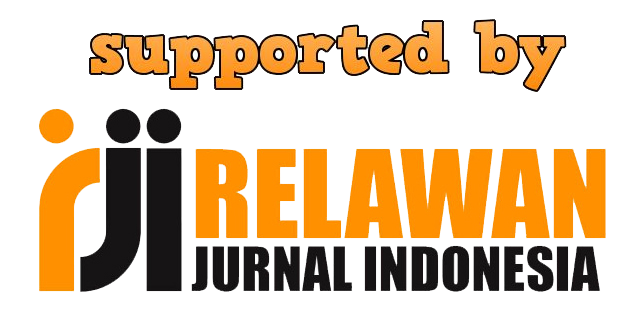Touristification and the Changing of Spaces for Tourism in Canggu Village
DOI:
https://doi.org/10.23887/jish.v11i3.45696Keywords:
Tourism, Spaces Transformation, Urbanize Rural AreaAbstract
This article discusses the transformation of Canggu Village from a fishing and farmer village into an urban-characterized area with main economic activities based on tourism. The entry of capitalist investors and the government's designation of a tourism area provide more significant opportunities for this change. This study looks at how the transformation of space for the benefit of tourism causes changes in social conditions in public spaces in Canggu Village. This study used a qualitative approach through in-depth interviews with several informants, such as the head of the Canggu Village, the owner of tourism accommodations, and the Canggu farmers. This study indicates that the village of Canggu has experienced touristification marked by the establishment of accommodations built by investors supported by the local government by establishing this village as a tourism area to increase local revenue. The spaces that have changed by supporting tourism activities have ultimately changed the socio-economic order of the community from non-industrial activities to tourism-based economic activities. The new tourism climate in Canggu Village then co-opted the local community, marked by the emergence of accommodation built by the local community, such as villas, homestays, and guesthouses, as part of the changing perspective of the local community towards economic changes in Canggu Village.
References
Akram-Lodhi, A. H. (2007). Land, markets and neoliberal enclosure: an agrarian political economy perspective. Third World Quarterly, 28(8), 1473–1456. https://doi.org/doi:10.1080/01436590701637326
Alfath, E. D., & Permana, Y. S. (2016). Festival 1000 tumpeng: Komodifikasi tradisi pariwisata, dan “territoriality” di Gunung Kelud. Masyarakat, Kebudayaan Dan Politik, 29(4), 169–180.
Aminah, S. (2018). Konflik dan kontestasi penataaan ruang kota Surabaya. Masyarakat: Jurnal Sosiologi, 20(1), 59–79.
Arcana, K. T. P. (2016). Persepsi masyarakat lokal terhadap perkembangan akomodasi pariwisata, studi kasus: Desa Adat Seminyak Kecamatan Kuta Kabupaten Badung, Bali. Analisis Pariwisata, 16(1), 52–60.
Astawa, I. K., Suardani, M., & Suardani, A. A. P. (2019). Kuta beach area, bali: a study on tourism zoning and carrying capacity. International Journal of Applied Sciences in Tourism and Events, 3(1), 81–92.
BPS. (2010). Kecamatan Kuta Utara dalam angka tahun 2010. Mangupura.
BPS. (2019). Kecamatan Kuta Utara dalam angka tahun 2019. Mangupura.
Brenner, N. (2013). Theses on urbanization. Public Culture, 25(1), 85–114. https://doi.org/doi:https://doi.org/10.1215/08992363-1890477
Canggu, P. D. (2020). Data Potensi Desa Canggu.
Christian, Y., & Desmiwati. (2018). Menuju urbanisasi Pulau Kecil: Produksi ruang abstrak dan perampasan. Journal of Regional and Rural Development Planning, 2(1), 45–63.
Coma-cros, N. (2018). Destination image of north Bali among south Bali visitors Núria Coma-Cros. Breda University of Applied Science.
Creswell, J. W. (2010). Penelitian kualitatif dan desain riset. Yogyakarta: Pustaka Pelajar.
Dipadewanda, I. M., & Mahagangga, I. G. A. O. (2018). Perkembangan pariwisata di daya tarik wisata pantai berawa Kabupaten Badung: Studi kasus dampak pola konsumsi masyarakat di Pantai Berawa. Jurnal Destinasi Pariwisata, 6(2), 309–313.
Freytag, T., & Bauder, M. (2018). Bottom-up touristification and urban transformations in Paris. Tourism Geographies, 20(3), 443–460.
Goonewardena, K., Kipfer, S., Milgrom, R., & Schmid, C. (2008). Space, difference, everyday life: Reading Henri Lefebvre. New York: Routledge.
Hanum, I. P. A. A. G., & Suryawan, I. B. (2017). Pengembangan potensi pantai Echo Beach sebagai daya tarik wisata di Desa Canggu Kecamatan Kuta Utara. Jurnal Destinasi Pariwisata, 5(1), 7–11.
Harvey, D. (2012). Spaces of capital: Towards a critical geography. Edinburgh: Edinburgh University Press.
Hooper, J. (2015). Tourist hotspots around the world are crowded with new visitors - but are they all welcome? Retrieved from https://www.theguardian.com/business/2015/jul/25/tourist-hotspots-visitors-developing-countries
Jensen-Verbeke, M. (2009). The territoriality paradigm in cultural tourism. Tourism2, 19(1–2), 25–31.
Kartika, I. M., Sujana, I. G., & Jehapu, A. (2020). Pengaruh perkembangan pariwisata terhadap perubahan alih fungsi lahan di Desa Canggu Kecamatan Kuta Utara Kabupaten Badung. WIDYA ACCARYA: Jurnal Kajian Pendidikan FKIP Universitas Dwijendra, 11(1), 51–62.
Kurnianingsih, N. A. (2013). Klasifikasi tipologi zona perwilayahan peri-urban di Kecamatan Kartasura, Kabupaten Sukoharjo. Jurnal Wilayah Dan Lingkungan, 1(3), 251–264.
Lefebvre, H. (1991). The production of space. Oxford: Blackwell Publishing Ltd.
Lefebvre, H. (2003). The urban revolution (R. Bononno, Trans.). Minneapolis: University of Minneapolis Press.
Minanto, A. (2018). Kota, ruang, dan politik keseharian: Produksi dan konsumsi ruang bersenang-senang dalam geliat Yogyakarta. Jurnal Komunikasi, 13(1), 41–56.
Misoczky, M. C., & Oliveira, C. M. (2018). The city and the urban as spaces of capital and the social struggle: Notes on Henri Lefebvre’s enduring contributions. Revista de Administracao Publica, 52(6), 1015–1031.
Nalle, V. I. W. (2021). Pendekatan geografi hukum kritis dalam kajian hukum tata ruang Indonesia: Sebuah wacana filsafat hukum dan interdisiplin. Justitia Et Pax, 37(1), 61–83.
Nurhadi, I., Amiruddin, L., & Rozalinna, G. M. (2019). Produksi ruang dan perubahan pengetahuan pada masyarakat sekitar objek wisata Waterland. Jurnal Kajian Ruang Sosial-Budaya, 3(1), 46–64.
Pontoh, C. H. (2013). Hak atas kota. Retrieved from https://indoprogress.com/2013/01/hak-atas-kota-2/
Pratiyudha, P. P. (2019). Gentrifikasi dan akar-akar masalah sosial: Menakar identifikasi, diagnosis, dan treatment proses gentrifikasi sebagai masalah sosial. Reka Ruang, 2(1), 27–38.
Sanjaya, I. P. W., & Marsoyo, A. (2019). Perubahan pemanfaatan ruang sebelum dan sesudah penetapan kawasan Perkotaan Sarbagita di Kecamatan Kuta Utara. Jurnal Planoearth, 4(1), 24–30.
Sanmartin, J. (2019). Discourse analysis, ideology and neologisms: Turismofobia, turistización and turistificación in the spotlight. Círculo De Lingüística Aplicada a La Comunicación, 78, 63–70.
Suamba, I. B. S., & Dwijendra, N. K. A. (2021). Study of spatial use control management in Canggu Village, Badung Regency, Bali, Indonesia. International Journal of Engineering and Emerging Technology, 6(2), 45–50.
Sujali. (2008). Pengelolaan usaha jasa pariwisata berbasis pengembangan masyarakat pada kawasan Ubud Bali. Majalah Geografi Indonesia, 22(2), 145–164.
Suryadana, L. (2013). Sosiologi Pariwisata. Bandung: Humaniora.
Susyanti, D. W. (2013). Potensi desa melalui pariwisata pedesaan. Jurnal Ekonomi Dan Bisnis, 12(1), 33–66.
Tunjungsari, K. R. (2018). Karakteristik dan persepsi wisatawan mancanegara di kawasan Sanur dan Canggu, Bali. Jurnal Pariwisata Terapan, 2(2), 108–121.
Wahyudi, A., Buchori, I., Syahbana, J. A., & Pratiwi, A. (2020). Transformation space due to conflict (A case study of Kuta, Bali, Indonesia). International Journal of Engineering Research and Technology, 13(12), 4139–4145.
Wahyundaria, D. A., & Sunarta, I. N. (2020). Identifikasi dampak perkembangan pariwisata terhadap lingkungan di Desa Canggu, Kecamatan Kuta Utara, Kabupaten Badung. Jurnal Destinasi Pariwisata, 9(1), 225–233.
Walpole, M. J., & Goodwin, H. J. (2000). Local economic impacts of dragon tourism in Indonesia. Annals of Tourism Research, 27(3), 559–576.
Wijaya, K. (2015). Masa depan pariwisata Bali (Perspektif permasalahan dan solusinya). Jurnal Riset Ekonomi Dan Manajemen, 15(1), 118–135.
Downloads
Published
Issue
Section
License
Copyright (c) 2022 Bayu Adhinata, Made Yaya Sawitri

This work is licensed under a Creative Commons Attribution-ShareAlike 4.0 International License.
Authors who publish with the Jurnal Ilmu Sosial dan Humaniora agree to the following terms:
- Authors retain copyright and grant the journal the right of first publication with the work simultaneously licensed under a Creative Commons Attribution License (CC BY-SA 4.0) that allows others to share the work with an acknowledgment of the work's authorship and initial publication in this journal.
- Authors are able to enter into separate, additional contractual arrangements for the non-exclusive distribution of the journal's published version of the work (e.g., post it to an institutional repository or publish it in a book), with an acknowledgment of its initial publication in this journal.
- Authors are permitted and encouraged to post their work online (e.g., in institutional repositories or on their website) prior to and during the submission process, as it can lead to productive exchanges, as well as earlier and greater citation of published work. (See The Effect of Open Access)


.png)
.png)













